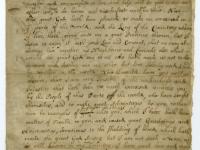Fall is now in full swing! The visible transformation of our environment is reason to name autumn “the season of change.” So, in wind of poetic relevance, especially as we enter into Thanksgiving’s month, tis the time to reflect upon one of the largest changes that has defined our American history - the history and fate of Native Americans. The founding of a New World, the encroaching of a foreign people, and the resettlement of more nations than just the French, British and Spanish mark the beginning of one of the biggest changes this land of America has ever seen. The narrative of history should shed an unbiased light on all perspectives. Checkout this HSP assignment on colonial America during the French Indian War, which does just that.
A thorough lesson plan about the origins of the United States of America includes more than the colonial perspective about coming to a New World. After all, this New World was not so “new” to everybody - that is, to the Native Americans. Modern day Cherokee genealogist, David Vann, gives us a healthy overview of Native American life during the colonial era and up through the American Revolution. Vann, also known as Iron Head, tells us great tips on how to begin researching Native American genealogy. Click on the link to listen to his lecture given at HSP in 2011.
Teaching students about Native American history can be tricky since their history was not documented in the same way the first colonists, and later American politicians and families recorded their lives. Therefore to begin to learn about early Native American life, we can look first at documents such as trade ledgers and clothing illustrations to envision a material culture. Moreover, we can look at historical correspondence, journals and land and peace treaties made with the Native Americans, to get snapshots of events, politics and attitudes regarding Native Americans.
Incorporating a Native American perspective is essential to understanding this history, since these documents can only provide a one-sided snapshot. Consider, for instance, that the English language itself was foreign for Native Americans, in addition to unfamiliar customs, such as legislative negotiation, and concepts, such as land ownership. Therefore, it is important to learn the Native American perspective on American and Native American history. Rarely, however, can one find a source written by a Native American - in English!
Despite this, HSP does have many primary sources that tell of Native American experiences from the 1500s to the 1700s. For instance, Conrad Weiser, a German Indian Affair’s agent, who recorded much of his works and experiences, provides insight into the lives of Native Americans and the Europeans’ contact with them. All primary sources provide a window into a subjective past, not an objective one! Therefore take the time to imagine and identify with the perspective of the Native Americans of which Weiser and others often writes.The indigenous populations of this continent have a long and deep cultural heritage and history, which saw its greatest upsets as it became enjoined and marginalized within American history. So the next time you teach Native American history, enliven the Native experience in the American story!
Below is an HSP curriculum plan that includes 4 unit plans, which will help students to understand the Native American worldview compared to the colonial European worldview:
http://hsp.org/education/unit-plans/native-american-european-contact-in-colonial-times
Here is a general timeline of Native American history during the colonial era, entitled “Prelude to War: A Chronology”:
http://hsp.org/sites/default/files/attachments/timeline.pdf
Finally, help yourself to some background reading on the Indians of North America:
http://hsp.org/blogs/new-in-the-library/new-titles-added-to-the-indians-of-north-america-collection

